How to Use a Kreg Jig
Hey, look at this! Tool Tutorial Friday is back! Today I have a great tool for creating strong joints when building with wood and furniture construction. Today I’m going to show you the simple tutorial for How to Use a Kreg Jig. If you don’t have one yet, you need to purchase one ASAP! This little tool is my go to for for building furniture, frames and just about anything that needs a tight joint.
(I’ve included affiliate links in this post for your convenience. I earn a small percentage from a purchase using these links. There is no additional cost to you. You can read more about affiliate links here.)
I use the K4 Kreg Jig It didn’t take me long to figure out how to use it, but I know it would have been helpful to have a step-by-step tutorial when I was first learning how to use a Kreg Jig. For your convenience, this is a quick tutorial.
I was first introduced to the Kreg Jig by my friends Ana White and Rayan with The Design Confidential. These two DIY ladies opened my eyes to pocket screw joints. Be sure to check out their blogs for more tips from the masters!
The Basics on How To Use a Kreg Jig
First you will need to measure the thickness of your board. The wood I used was 3/4″ thick. It is important to actually measure your stock because what is sold as a 1″ thick board is usually about 3/4″ thick. You should always measure any wood you buy regardless of how it is labeled. The wood may shrink or deviate from the standard size.
Use that measurement to set the depth collar on your Kreg drill bit. The Kreg Jig I have has this handy guide built into the base. Simply set the drill bit into the groove and line up the step (the spot where the drill bit goes from wide to narr0w) with the measurement that corresponds to the thickness of your wood. The depth collar is adjustable with a hex bit.
Next you want to set the jig placement, also based on the thickness of your wood. You’ll notice the numbers on the side of the jig. Loosen the gold thumb screw and raise or lower the hole guide until it corresponds to your wood measurements. Re-tighten the thumb screw.
If you are joining two different thicknesses of wood, use the thinner board to set your measurements. You may want to vary your screw size. Kreg Jig has this handy chart to find the correct screw lengths (the left vertical side in the chart is the thickness of the board receiving the pocket holes. The horizontal top edge is for the thickness of the board that is being screwed into.)
The next thing I do is clamp the jig to my workbench. This isn’t absolutely necessary, but it helps hold things steady.
Set your wood into the jig, line up the end you want to drill holes in at the bottom of the jig. Then press the clamp lever towards the board to clamp it in place. You may need to turn the clamp screw to tighten or loosen it for a secure hold.
Insert the Kreg Jig drill bit into your drill. Start your drill in the forward motion. Drive the bit into the pocket hole guide. Stop at the depth collar on the bit.
For strong joints always use at least two pocket holes. One will only act like a pivot point for the joints to twist and turn.
Remove the drill bit and unclamp the wood.
To complete your joint, clamp the pieces together and drive pocket hole screws into the pocket holes and into the second piece of wood. Choose the screw that is recommended for your material thickness:
1/2″ material = 1″ screws
3/4″ material = 1 ¼” screws
1 1/2″ material = 2 ½” screws
There is a clamp that comes with the K4 Kreg Jig (you can use it to clamp on top and bottom of the joint), but I prefer a larger clamp like this 24″ IRWIN clamp so that the wood doesn’t get marred.
To conceal the pocket holes after your joint is completed, purchase the Kreg plugs. Or you can fill them with Bondo (Yes! Bondo works great as a strong wood putty! Just remember to allow for drying time and sanding when using Bondo.)
And that’s the basics for using a Kreg Jig! You can save some money if you want to purchase the Kreg Jig Jr., but if you plan to do a lot of building, I recommend the Kreg Jig K4 for easier joinery. It has the removable pocket hole guide. The price usually runs just under $100.
Want to learn how to use more tools? Grab a tool and learn now:
Check out these projects using a Kreg Jig:
DIY Open Frame Radiator Screen Cabinet Doors:
Pergola with Trellis Trash Can Screen:
Fireplace Insert Draft Stopper:
Disclosure: I was not paid to endorse Kreg Jig. I purchased the jig with my own money and wrote this tutorial to give my readers the basic tips for using one. As with all tools, be sure to read your owners manual and familiarize yourself with your tools. I am not responsible for any errors or omissions in this tutorial. This post contains affiliate links.

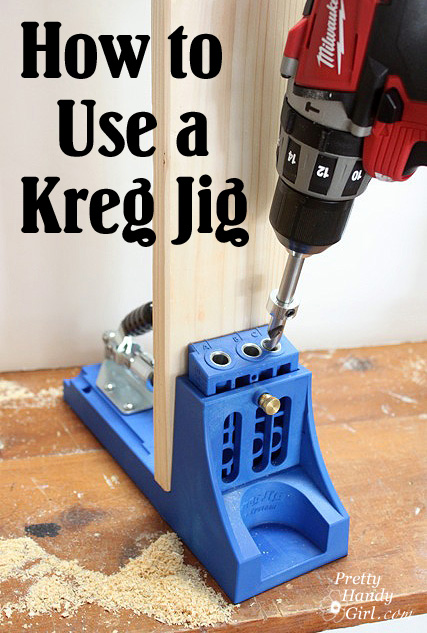
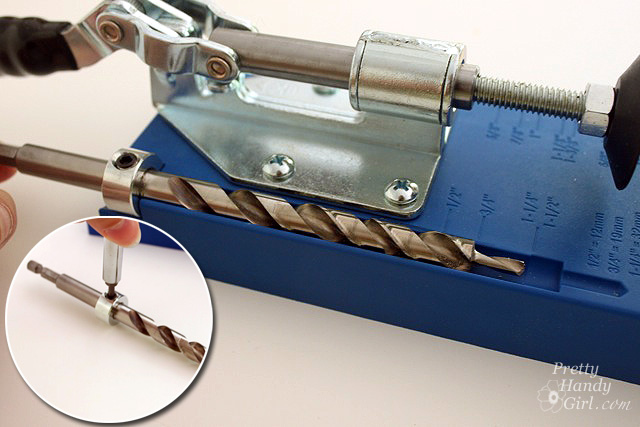
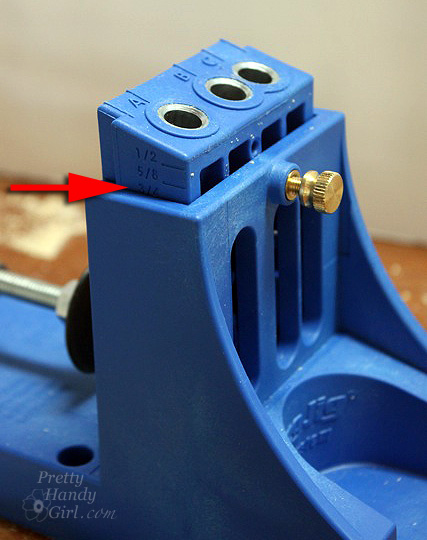

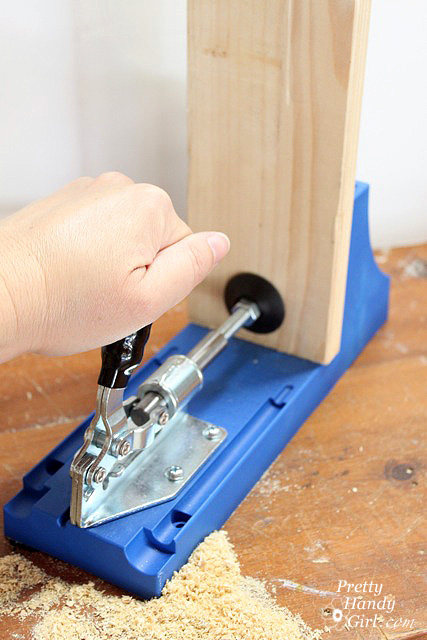

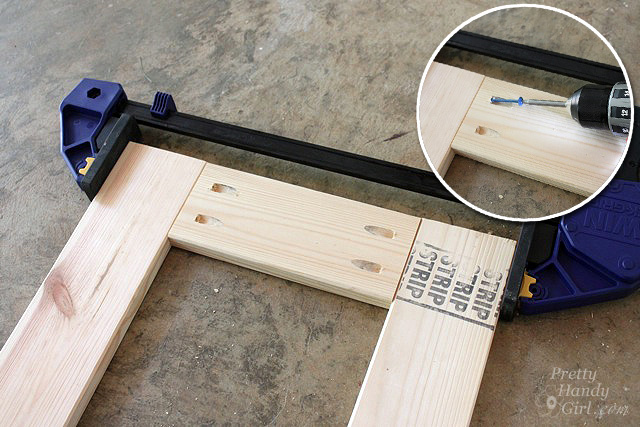
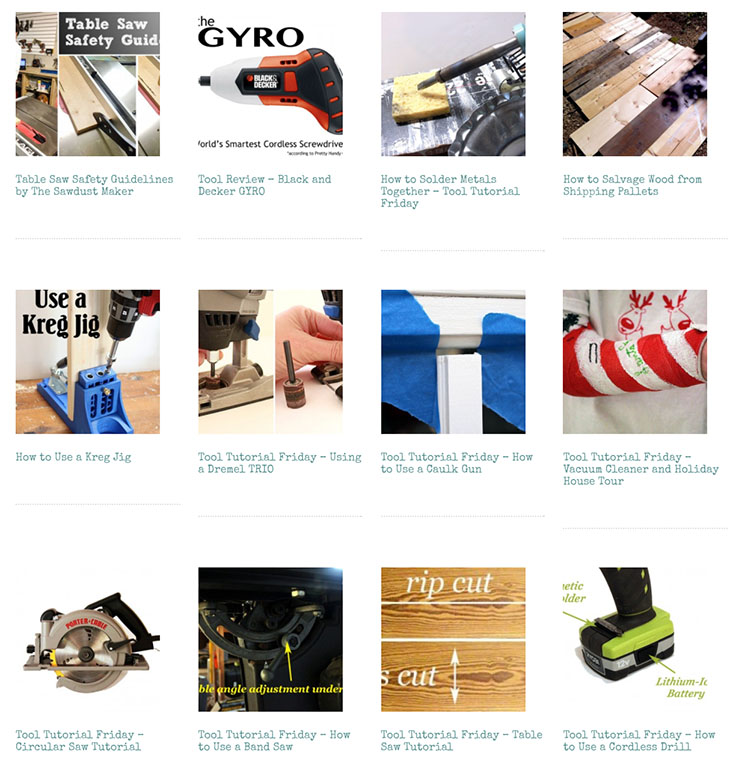
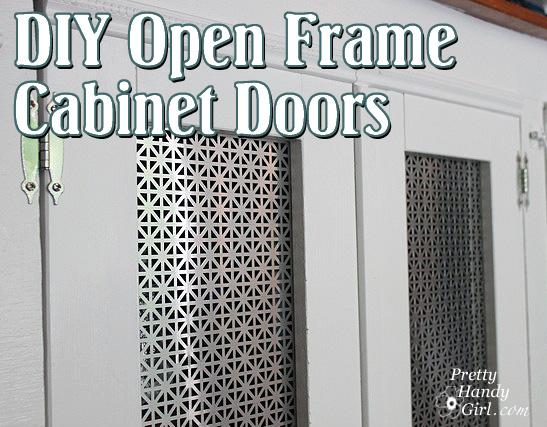
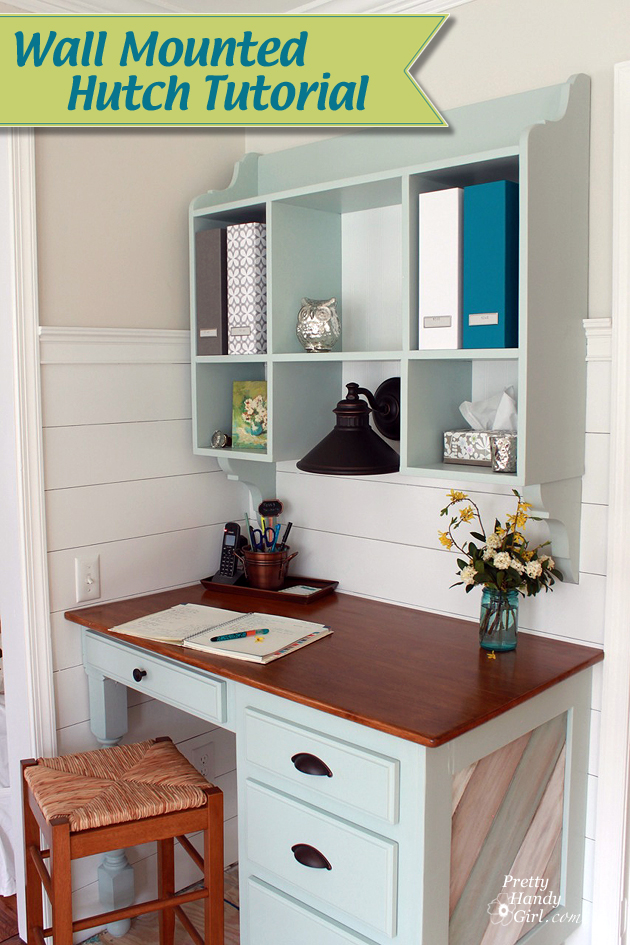
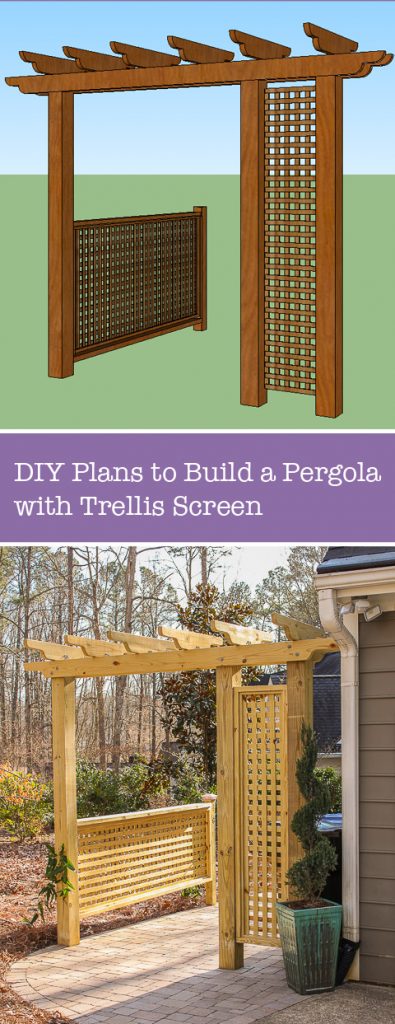
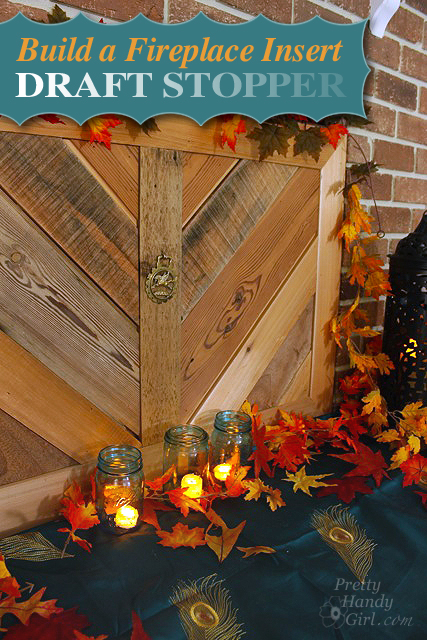

Thank you so much for sending me this tutorial on, “how to use a kreg jig”. You rock. After reading everything and trying to build something using the kreg jig, I’ll let you know how I did. Thanks again.
Thanks for posting this. It Cleared up a couple of things for me.
I love my Kreg Jig. Worked out how to use it but was unsure how to keep the pieces still to put them together. Glad I see I was on the right track as bought a clamp just like the one you used!! Onwards and upwards now!!!
It is an awesome tool to have!
Great basic tutorial! One additional point you might mention is drilling down into the piece half way, and as the drill is still turning, pull your bit up a bit to loosen and remove the loose pieces, then finish the hole. This saves wear and tear on the bit and cleans out the hole for a smoother finish. Love my Kreg jig, don’t know how I worked without it. Keep up the good work
Great tip Wes! This is especially important when drilling into thicker pieces.
Thanks for showing the irwin clamp to hold boards together! I tried to make a stool and I had my pocket hole screw holes mades, but couldn’t figure out how to put the pieces together! I got the kreg jig r3, wish I had gotten the k4, looks so much easier to get the holes drilled in.
How do you set the washer on the drill bit if I don’t have the factory pattern?
Hi, do you need special screws for this? I got the K3, made the wholes but having problems using regular screws. Any advice? Thank you so much!
Yes, you need the Kreg pocket hole screws and should use the Kreg square bit with them.
Hi! Thanks for this tutorial!! Quick question- do you use the drill bit that the kreg jig included for every pocket hole you make? I’m scared to use it because it seems so much bigger than the screws I will be using.
Yes, you definitely want to use the drill bit that came with the kit. The width accommodates the screw head and the step at the end is necessary for proper depth of the screw.
Thanks a bunch, your description of how to use the Kreg Pocket Hole Jig was much better than the users manual that came with the purchase.